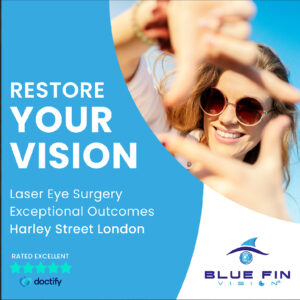Swing chairs are a delightful addition to any outdoor space, offering a unique blend of relaxation and charm. Whether you’re lounging by the pool, sitting in your garden, or enjoying the breeze on your balcony, a swing chair provides an inviting and peaceful environment to unwind. These chairs offer more than just a seat—they offer a relaxing experience that gently sways with the breeze, creating a serene atmosphere. With their stylish designs and comforting motion, swing chairs elevate your outdoor decor while providing a perfect spot for relaxation.
What Are Swing Chairs?
Swing chairs are suspended seats that hang from a frame or structure, allowing you to gently rock or swing back and forth. They typically consist of a comfortable seat made from materials like wicker, fabric, or cushioned padding, and are suspended by ropes, chains, or sturdy metal frames. Swing chairs come in various sizes, styles, and designs, making it easy to find one that complements your outdoor setting.
What sets swing chairs apart from traditional seating is their ability to move. This movement creates a soothing, calming effect, helping to reduce stress and promote relaxation. Whether you’re enjoying a moment of solitude with a book or sharing a peaceful afternoon with friends, swing chairs add a layer of comfort and elegance to your outdoor space.
Types of Swing Chairs
Swing chairs come in different styles and configurations to suit various needs, preferences, and outdoor spaces. Here are some of the most popular types of swing chairs:
Hanging Swing Chairs: These classic swing chairs are suspended from a single point, typically from a sturdy overhead beam or a hanging stand. They often have a round or egg-shaped design, offering a cozy, enclosed space where you can sit or recline. Some hanging swing chairs come with cushions for added comfort, while others feature a simple design for a more minimalist aesthetic. They are perfect for small to medium-sized patios, balconies, or gardens.
Free-Standing Swing Chairs: Free-standing swing chairs come with their own built-in frame or stand, eliminating the need for installation or hanging. This type of swing chair is highly versatile and can be placed anywhere in your garden or patio. They typically have a sturdy metal frame with a cushioned seat or fabric sling, and some models even feature reclining backs for added comfort. Free-standing swing chairs are ideal for those who want the luxury of a swing without having to attach it to an existing structure.
Canopy Swing Chairs: If you love to relax in the shade, a canopy swing chair is the perfect choice. These swing chairs come with a built-in canopy or overhead shade, offering protection from the sun while you lounge. They are perfect for hot summer days when you want to enjoy the outdoors without being exposed to direct sunlight. Canopy swing chairs are typically larger, with enough space to seat two or more people, making them ideal for family gatherings or entertaining guests.
Double Swing Chairs: As the name suggests, double swing chairs are designed to accommodate two people. These swing chairs are often wider and come with extra cushioning for added comfort. Double swing chairs can be found in hanging styles or free-standing configurations, and they often feature a comfortable, wide seat that allows you and a loved one to swing together. They are perfect for couples or families who want to enjoy the swinging motion together.
Egg Swing Chairs: Egg-shaped swing chairs have become increasingly popular for their stylish and modern appearance. These chairs have an enclosed, cocoon-like design, offering a private, cozy space to relax. The round or oval shape of the chair, combined with the cushioned interior, makes them perfect for lounging in comfort. Egg swing chairs are typically made of wicker, rattan, or metal, and can be suspended from a stand or frame, creating a distinctive and stylish feature in any outdoor setting.
Glider Swing Chairs: A glider swing chair offers a gentle, back-and-forth gliding motion instead of a full swinging movement. This type of chair provides a soothing, smooth experience that is perfect for relaxation. Glider swing chairs are often larger than traditional swing chairs, with enough space for two people. They feature sturdy frames and comfortable cushions, making them ideal for long periods of sitting and enjoying the outdoors.
Materials Used in Swing Chairs
Swing chairs come in a variety of materials, each with its own benefits and aesthetic appeal. The material you choose will impact both the comfort and durability of your swing chair. Here are some common materials used in swing chair construction:
Wicker/Rattan: Wicker and rattan are classic materials used for swing chairs, offering a natural, rustic look. These materials are lightweight yet sturdy, and they are ideal for creating cozy, outdoor spaces. Wicker swing chairs are typically woven by hand and can be paired with soft cushions for extra comfort. While rattan chairs have a timeless appeal, modern synthetic rattan is also available, which is weather-resistant and low-maintenance.
Metal: Metal swing chairs, often made from aluminum or steel, provide a sleek, contemporary look. They are highly durable, rust-resistant, and perfect for withstanding the elements. Metal swing chairs are usually paired with comfortable cushions or fabric seats for added comfort. Their sturdy frames can support larger weights, making them ideal for long-lasting outdoor furniture.
Wood: Wooden swing chairs provide a natural and rustic aesthetic that blends well with outdoor spaces. These chairs are often crafted from hardwoods like teak, acacia, or cedar, which are known for their strength and ability to withstand weather conditions. Wooden swing chairs are comfortable and stylish, offering a traditional look that complements garden settings.
Fabric: Many swing chairs feature fabric seating, often made from materials like polyester, cotton, or outdoor-specific fabrics like Sunbrella. These fabrics are designed to be water-resistant, durable, and easy to clean. The soft cushioning that fabric provides makes it a popular choice for those who want maximum comfort. Fabric-covered swing chairs are ideal for lounging, especially when paired with extra pillows for support.
Rope: Rope swing chairs are typically hanging seats that use strong, durable rope to suspend the chair from a frame or structure. They offer a fun, bohemian look and can be found in a variety of styles, from simple, minimalist designs to more intricate, woven patterns. Rope swing chairs are lightweight and easy to move, making them an excellent option for those who want a casual, relaxed vibe.
The Benefits of Swing Chairs
Swing chairs offer a range of benefits that go beyond comfort and style. Here are just a few reasons why adding a swing chair to your outdoor Swing chairs space can be a great investment:
Relaxation and Stress Relief: The gentle rocking or swinging motion of a swing chair has a calming effect on the body and mind, helping to reduce stress and promote relaxation. The rhythmic movement can improve circulation, relax muscles, and soothe the nervous system, making it the perfect place to unwind after a long day.
Versatile Outdoor Furniture: Swing chairs are versatile pieces of outdoor furniture that can complement a variety of spaces, from small balconies to large gardens. Their unique design allows them to add a touch of personality to your patio, garden, or balcony while providing a comfortable place to sit.
Enhanced Aesthetics: Swing chairs are not just functional—they also serve as stylish focal points in your outdoor decor. With their unique designs and comfortable seating options, swing chairs can instantly elevate the look of any outdoor area, from contemporary and minimalist to rustic and bohemian.
Family-Friendly: Many swing chairs are designed to accommodate two or more people, making them ideal for families or couples who want to spend time together outdoors. Whether you’re sharing a swing with a loved one or relaxing with your kids, a swing chair creates a cozy space for bonding and relaxation.
Easy to Move: Swing chairs, especially free-standing or hanging models, can easily be relocated around your garden or patio. This flexibility allows you to reposition the chair depending on the time of day or the direction of the sun. For those with limited space, a movable swing chair gives you the option to enjoy different areas of your yard or balcony.
How to Care for Your Swing Chair
To ensure that your swing chair lasts for years, proper maintenance and care are essential. Here are a few tips to keep your swing chair in top condition:
Clean Regularly: Dust, dirt, and debris can accumulate on swing chairs, especially fabric or wicker models. Clean your swing chair regularly using a soft cloth or brush to remove dirt, and use a mild soap solution for fabric seats. Wicker and metal chairs can be wiped down with a damp cloth to maintain their appearance.
Protect from the Elements: If your swing chair is not covered or stored during bad weather, it can be exposed to rain, snow, or strong sunlight, which may cause damage over time. Using a cover or storing your swing chair indoors during the off-season can protect it from harsh conditions.
Check for Wear and Tear: Regularly check the ropes, chains, or metal frame of your swing chair for signs of wear or damage. Tighten any loose screws or bolts, and replace any worn-out components to ensure the safety and stability of the chair.
Storage: If you live in an area with harsh winters, consider storing your swing chair indoors or in a sheltered space during the off-season to prevent damage from freezing temperatures or moisture.
Conclusion: Swing into Comfort with a Stylish Swing Chair
Swing chairs are the ultimate combination of comfort, style, and relaxation. Whether you’re looking for a cozy spot to relax in the sun or a stylish feature for your outdoor decor, a swing chair is the perfect addition to any garden, patio, or balcony. From hanging swing chairs to gliders and egg-shaped loungers, there are plenty of options to suit your…








